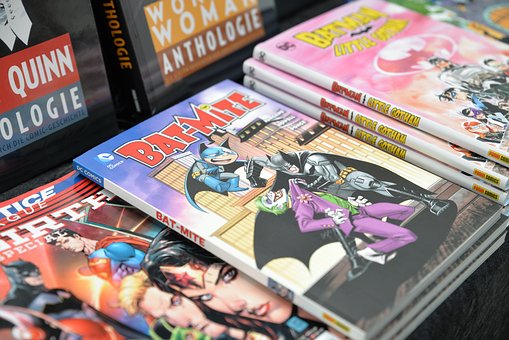 I have friends who collect a variety of comic books. They buy the issue, put it in plastic before adding it to their collection while others grab the newest issue, read them again and again, not worrying about the value as a collectable item.
I have friends who collect a variety of comic books. They buy the issue, put it in plastic before adding it to their collection while others grab the newest issue, read them again and again, not worrying about the value as a collectable item.Cartoons both political and otherwise have been around for much longer but as far as "Comic Books" go, they've only been around for just over 100 years.
The first recognized comic book was "The Yellow Kid in McFadden Flats" published in 1897 because it had the words "Comic Book" on the back cover. It contained black and white reprints of the popular "Yellow Kid" comic strips. Soon other comic strips were repackaged into compilations and sold as "books" but the first monthly comic book appeared in 1922 but it still contained reprinted black and white strips. In 1933, "Funnies on Parade" began publishing full color strips in today's standard size.
The first real comic book published with original material in color hit the market in 1935. It was produced by National Allied Publications, the forerunner of DC comics. It was called "New Fun #1" The creators of Superman began working for this company in 1935 but they didn't actually introduce him until the first issue of "Action Comics #1" in 1938. Batman joined the line up about a year later.
National Allied Publications major rival hit the shelves in October 1939 with "Marvel Comics #1". The company was known as Timely Publications at the time but later became Marvel Comics. Through the war, comic books were published rapidly due to the demand. Most issues ran around 100,000 copies sold but Superman, Batman, and Captain Marvel comics sold in the range of 1.5 million copies. This is the Golden Age of Comics.
After the war was over, the sales of superhero comic books began declining and some titles went out of print. The focus changed to more serious topics such as crime, horror, romance, and Westerns but Superman, Batman, and Wonder Women managed to keep enough of an audience to survive.
In 1954,a psychiatrist published a book in which he stated comic books were corrupting teenagers in a variety of ways. One of the Senate subcommittees became so alarmed, they called the author to testify in front of them and the Comic book companies responded by creating the Comic Code Authority as a way of monitoring themselves.
This code stated that good must always triumph over evil, crime should be portrayed as an unpleasant activity, women should be portrayed realistically, and there should never be any werewolves, vampires, ghouls, etc. This last bit cause many horror, romance, and crime comic books to cease publication.
This lead to comic book companies resurrecting many of the superheroes from the golden age, update them, and created new ones. Many story lines of this time were no longer dark but silly and campy to meet the new code. It also lead to silly characters such as Batbaby, Bat-Mite, and others.
In the early 1970's comics changed focus again with the shocking murder of Peter Parkers girl friend. It showed that even heroes cannot save their loved one. At about the same time, the code loosened things up a bit by allowing werewolves and vampires back in as long as they were handled in the traditional ways.
This change allowed horror comics to return with Dracula, Zombies, and Ghost Rider. Most story lines became more social issues such as pollution, racism, and social injustices. This is when they began introducing super heroes who were African American, and other minorities. In addition, they worked on clearing up plot consistencies over time with multiple universes.
The 1980's and 1990's brought us darker, less optimistic stories with the Watchmen, Batman: The Dark Knight, super heroes aging, dying, and retiring. From here, comics moved back to being optimistic and hopeful.
I hope you enjoyed this quick history of the comic book. Let me know what you think, I'd love to hear. Have a great day.
No comments:
Post a Comment